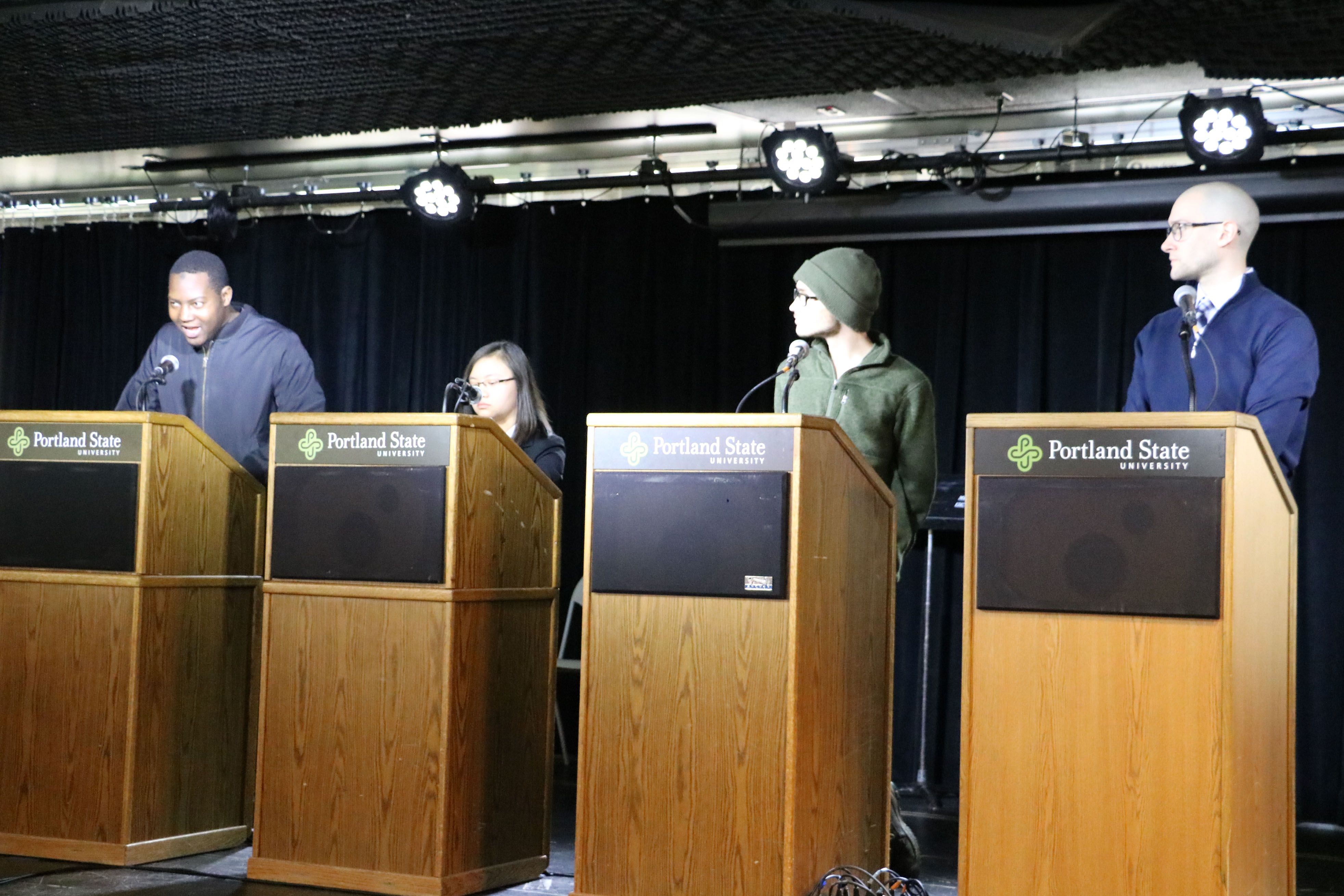With golden hopes and the revamping of Shattuck Hall, PSU is well on its way to becoming the Michael Phelps of LEED-certified standards. Portland is often viewed as a role model for environmental sustainability across the nation, and Portland State followed suit with the rededication of Shattuck Hall on Monday, Sept.
Old doors open to the new
With golden hopes and the revamping of Shattuck Hall, PSU is well on its way to becoming the Michael Phelps of LEED-certified standards.
Portland is often viewed as a role model for environmental sustainability across the nation, and Portland State followed suit with the rededication of Shattuck Hall on Monday, Sept. 22.
Wrapping up a year of renovations and remodeling, the updated Shattuck Hall will provide not only sufficient new eye candy–including deliberately exposed spaces throughout the building that reveal the inner workings of its remodeled seismic, heating and cooling systems and electric wiring–but vastly improved functionality, comfort and sustainability.
The “undressed” sections of the building, as some staffers described it at last Monday’s event, allow for students to “see how the different systems interact and share space,” said Dean of Fine and Performing Arts Barbara Sestack.
Using the innovative LEED (Leadership in Energy and Environmental Design) rating system as a guide, the building was literally recycled in some areas to preserve its 94-year long identity as a campus landmark.
Developed by the nonprofit U.S. Green Building Council, LEED’s consensus-based qualifications of Certified, Silver, Gold or Platinum, are determined by criteria in five categories: sustainable site development, water savings, energy efficiency, materials and resources selection and indoor environmental quality.
The second oldest building on campus, Shattuck was built in 1914-15 as an elementary school, and before improvements held much of its original plumbing, small classrooms and allowed in little daylight, which could be especially problematic for the building’s many art and architecture students.
LEED standards were not the only thing in mind when it came to the potential of Shattuck Hall after its new unveiling, said Sestack.
“The building itself is a teaching tool for the architecture students,” Sestack said in reference to the exposed systems.
Sestack said students and faculty alike will be able to monitor the building’s energy performance and assess the effectiveness of the sustainable strategies employed, as one example of how Shattuck Hall could be an environmentally sound example to learn from.
Speaking before the ribbon cutting at the rededication, PSU President Wim Wiewel called the re-use of Shattuck’s existing infrastructure “a prime example of our green spirit.”
Wiewel also emphasized the building-as-teacher concept, and outlined proposals for future ecological improvements on campus.
While most construction is complete and the building is ready for classroom use, finishing touches will continue to be worked on until November, said PSU’s Director of Communications Scott Gallagher in an e-mail.
Further explorationLocated on the south side of Neuberger, here’s what to look for on your next visit to Shattuck, and what’s to come in the realm of eco-friendly improvements for the university.
WONDERS OF MODERNIZATION:No more escaping class for 20-minute bathroom breaks: Shattuck Hall now has bathrooms on not one, but all three floors. The building also now boasts a central cooling system for the first time in its history.
LIGHTS AND SPACE:Several skylights and radiant ceiling panels have been implemented, and walls have been knocked down between classrooms, while large drafting tables replacing confining desks help to create an environment that reflects “the modern ways in which architects work,” according to Vice President for Finance and Administration Lindsay Desrochers. The airy and impressive Shattuck Hall Annex is worth a visit on its own.
ROOFTOP GARDEN PARTIES: No black tie required-soon (weather permitting) classes will be able to convene on the roof alongside a fully sustainable urban garden.
ARCHITECTURAL MASTERY: Beginning fall term of 2009, graduate students looking for an excuse to spend more time in Shattuck’s spacious classrooms will be able to complete a master’s degree in Architecture.
WHAT’S TO COME: -More LEED-certified improvements are on track around campus, including the in-progress Rec Center and Lincoln Hall. The next buildings slated for upgrades are Science Building 2, and a potential new Small Business Administration building, though funding for the latter is still to be determined. -A Gold LEED certification for Shattuck (the building is already Silver) is to be verified in the upcoming weeks depending on the tested efficiency of the building’s improvements and its adherence to environmental guidelines both during and after construction.




